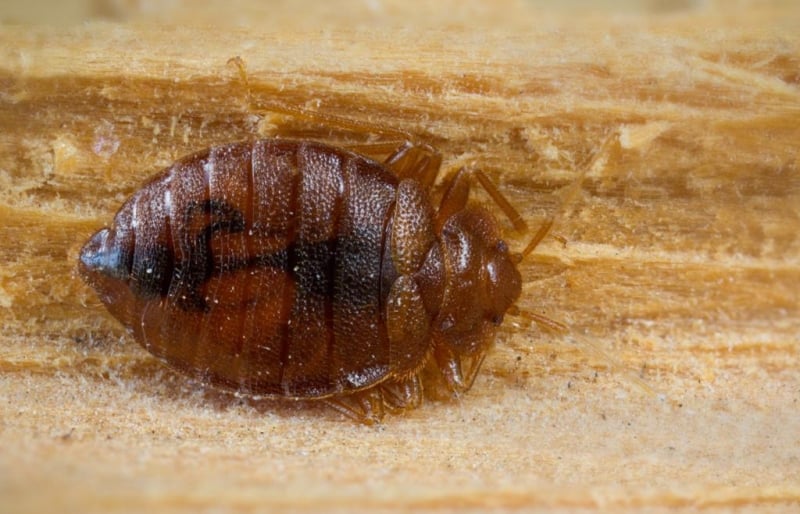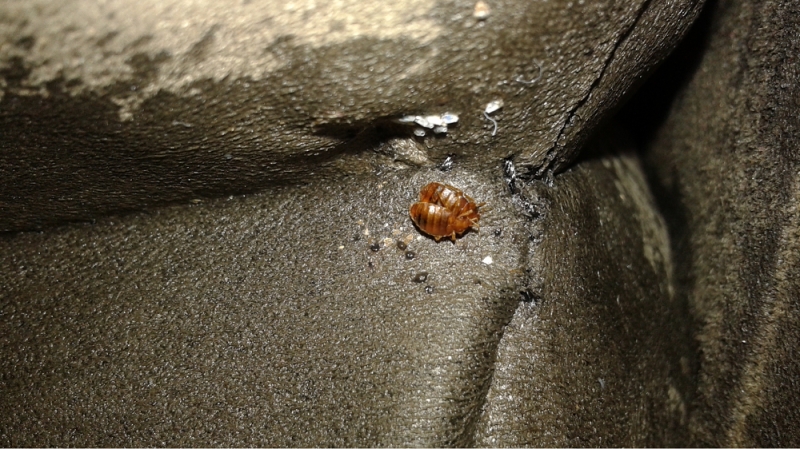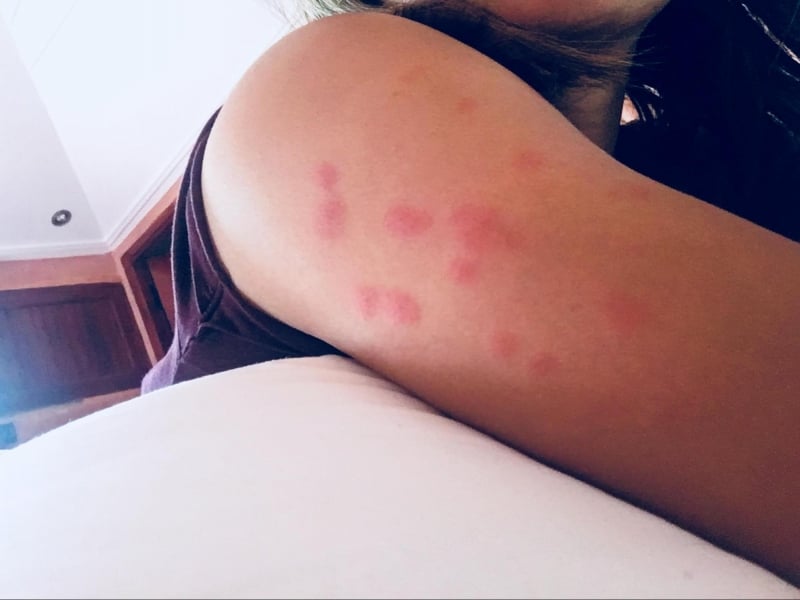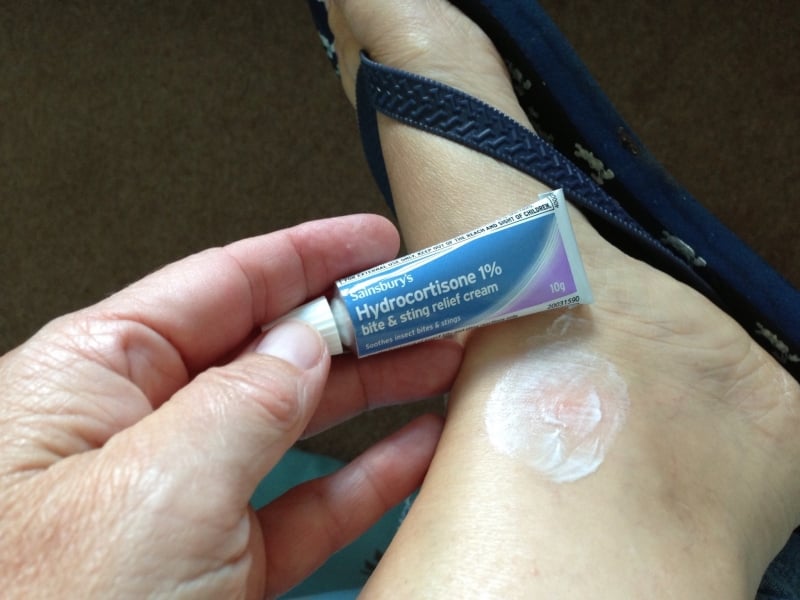During the one year I spent travelling abroad, I personally encountered bed bugs not once, twice or even thrice. These pesky creatures seemed to have an affinity for me so I had to deal with them multiple times. Each time I woke up with fresh bites, it was a nightmare all over again. I’m not exaggerating when I say that bed bugs have caused me great anguish and frustration.
The only good thing that came out of my experience with bed bugs is that now, I am a bit of an expert on them.

Image credit: Mike Lewis
Whether you’re just reading up before a trip or have your body covered in itchy red bumps, here’s a bunch of tips and information that could help you:
About bed bugs
The first time I was bitten by bed bugs was in a hostel in Sofia. The last time it was in a hotel in Marrakech. Bed bugs do not discriminate; they are just as likely to make a hostel or a five-star hotel their home. They are experienced hitchhikers that love to travel from place to place by hiding in travellers’ clothing and belongings. A friend once joked that it’s not fair — bed bugs don’t need a passport to travel.

Image credit: OH-BugMan
Bed bugs feed under the shade of darkness, creeping up on you while you’re asleep. Once bitten, people react to bed bugs differently. I would display red welts on affected areas almost immediately, while others may have delayed symptoms or no reaction at all. The bites are actually painless; the skin reaction and itching are caused by the body’s immune response to the allergens in the insect’s saliva.
The good news is that while these critters can no doubt be maddening, they are not known to transmit diseases.
Prevention
While I’m the sort of person who usually wouldn’t bother to check for bed bugs in every new accommodation, this step can save you from lots of trouble. What you want to do is to inspect the mattresses and sheets for tiny black/brown fecal stains, eggs or eggshells, pale yellow skin, and of course, the reddish-brown bed bug itself. Peer into the seams of the mattress and crevices of the bed frame where the bed bugs are likely to hide. They might also be found at the edges of carpets and between floorboards. While bed bugs come in various sizes, the adult ones grow to the size of an apple seed and are visible to the eyes.
You will also want to keep your belongings safe from bed bugs by storing them away from the bed and floor. Make it a habit not to scatter your clothes around the room. If there’s a metal rack, use it for your luggage and don’t forget to zip it up too as an extra precaution.
It’s also worth mentioning that you can check the reviews of the accommodation before booking to see if there’s any recent mention of bed bugs. Keep in mind that outbreaks are common in the industry and personally, I wouldn’t break a sweat over an old review. However, some hotels schedule routine inspections by professional pest control companies while sadly, there are others that simply do not care one bit. It’s not worth the risk if there’s a chance that the accommodation is currently dealing with an outbreak of bed bugs.
Control

If you find yourself itching in the middle of the night or waking up with swollen red spots, inspect your skin carefully. Bed bug bites often appear in a line or in a zig-zag pattern on the area that is exposed during sleep. However, this is not always the case; you could also have multiple bites in a cluster. Also, as mentioned, some people develop symptoms a few days after their encounter, so you cannot always be sure that you were bitten at a particular location. It’s normal to be filled with uncertainty once you suspect that you’ve encountered bed bugs.
The next step to take is to inspect the room. Focus on your bed sheets and look for blood stains that might have resulted from the bed bug being inadvertently crushed by you while they were feeding. Next, look for the bed bugs themselves. If you manage to find one, bag it or snap a picture so you can show it to the hotel reception. This would strengthen your case if you’re planning to ask for a refund or compensation.

Whether or not you have proof that the accommodation has bed bugs, you have the choice to ask for another room or to leave. While you prepare for the shift, you need to reduce the chances of any bed bug hitching a ride with you to your next location. Put all your belonging, especially clothes, in a sealed plastic bag and look for a place where you can do laundry. You will want to give your clothes a heat treatment in the dryer at 50°C for at least 30 minutes. If there is no dryer available, you could also wash your clothes at 60°C, also for 30 minutes, and then hang it out in the sun to dry. Note that you must hit these temperatures and durations to ensure 100% mortality of adults, nymphs, and eggs.
It is also possible to kill bed bugs by freezing, but it is usually more convenient for travellers to find a dryer than it is for them to find a large freezer where they can store their belongings for days. Items that cannot be laundered should be carefully inspected in a location where the bugs cannot scamper away (e.g. a bathtub). You can also put these items in a sealed black plastic bag and leave it to bake in the sun for a day. However, note that this method only works if the internal temperature reaches the thermal death point of the bed bugs.
On my worst encounter with bed bugs, I had new bites over the stretch of a week, even though I hopped from place to place. I suspected that the bed bugs found a home in my backpack, so I resorted to booking an Airbnb apartment where I could re-treat all my clothes in the dryer and submerge my backpack in the bathtub. It worked. (But I might also have been responsible for introducing bed bugs in the hostels I stayed in during that week.)
Treatment

Image credit: Margaret Stranks
Once you’re sure that you won’t be getting new bed bug bites anytime soon, you can focus on your skin. Wash the bites with a gentle soap and water. You can purchase an over-the-counter hydrocortisone cream and apply it on your skin to relieve the itchiness. Antihistamine tablets may also help. What’s important for you is to control the desire to scratch the bites which might break the skin and cause infections. If the bites are severe, visit a doctor for professional medical help.
Bed bug bites do not heal overnight. One time, I went without any medication and it took weeks for the itching to stop and months before the scars started to fade. Another time, I received an anti-allergy medication at a clinic which cleared the bed bug bites in a matter of days.
While coming to a battle with bed bugs might dampen your spirits, try your best to keep a positive mindset and take it as an educational experience. Also, be extra careful that you do not bring any bed bugs with you on the flight back as this souvenir, though small, can wreak havoc in your home.
Also read: What To Pack For Different Types of Vacations: Essential Tips & Tricks




